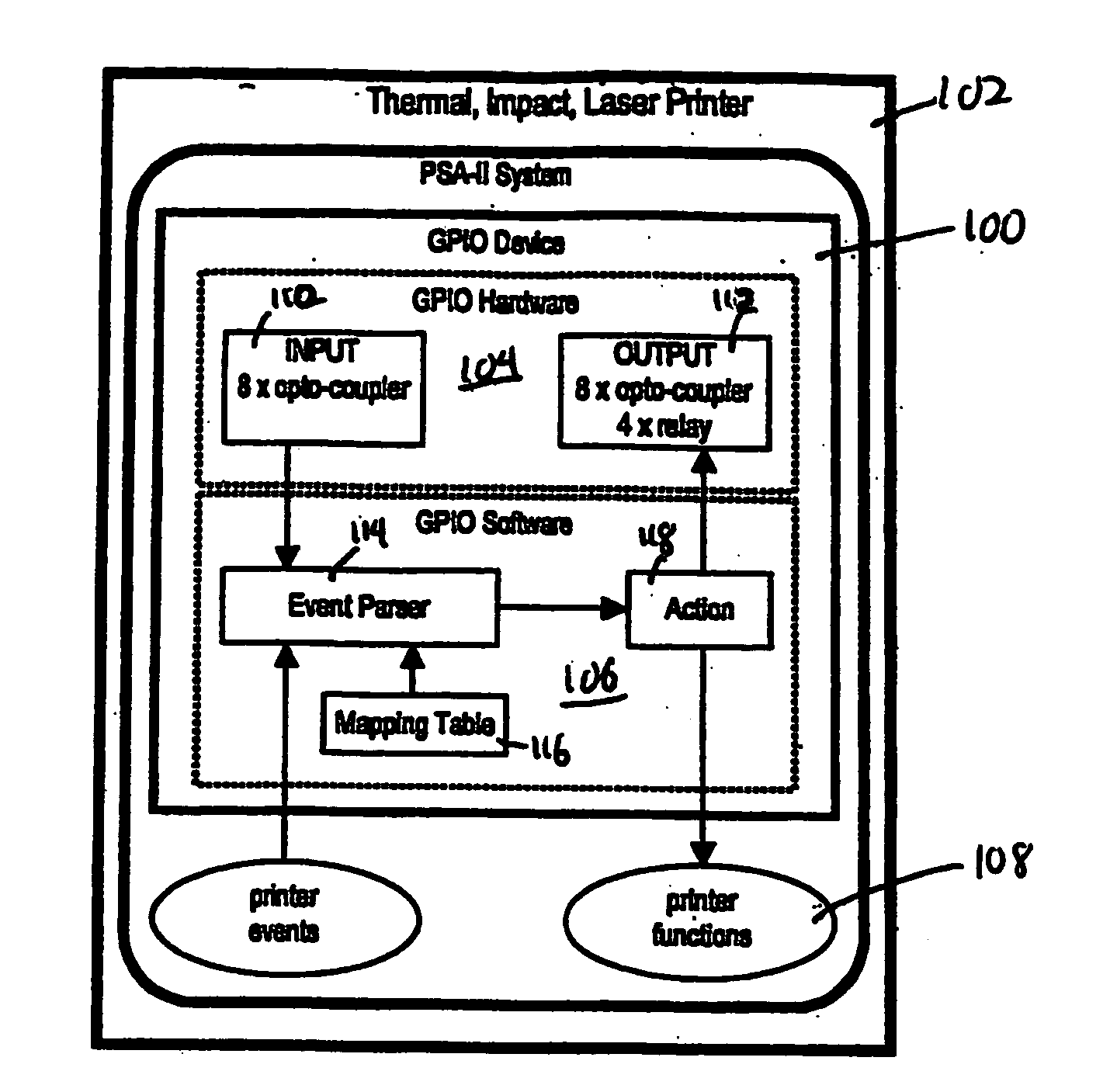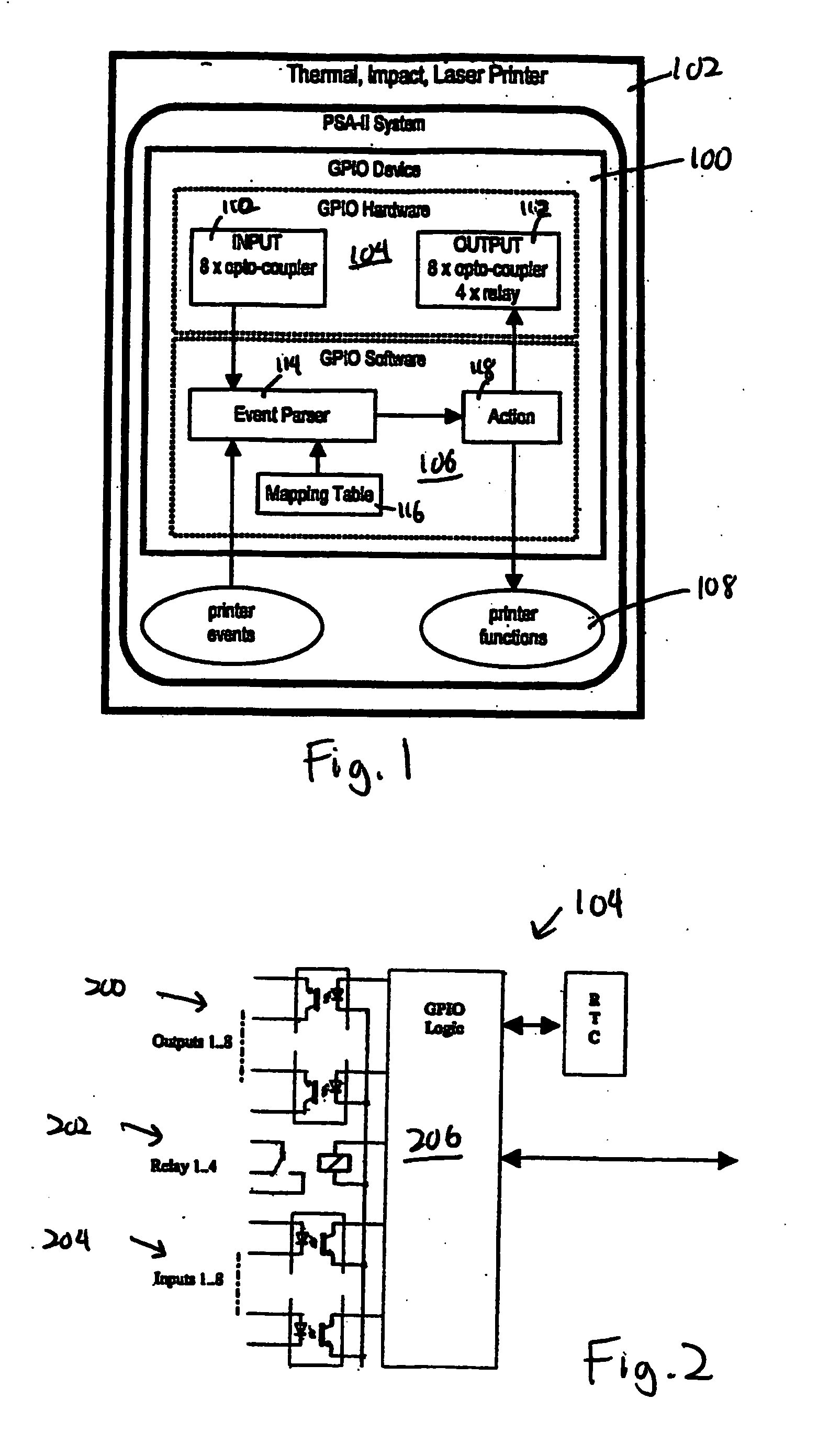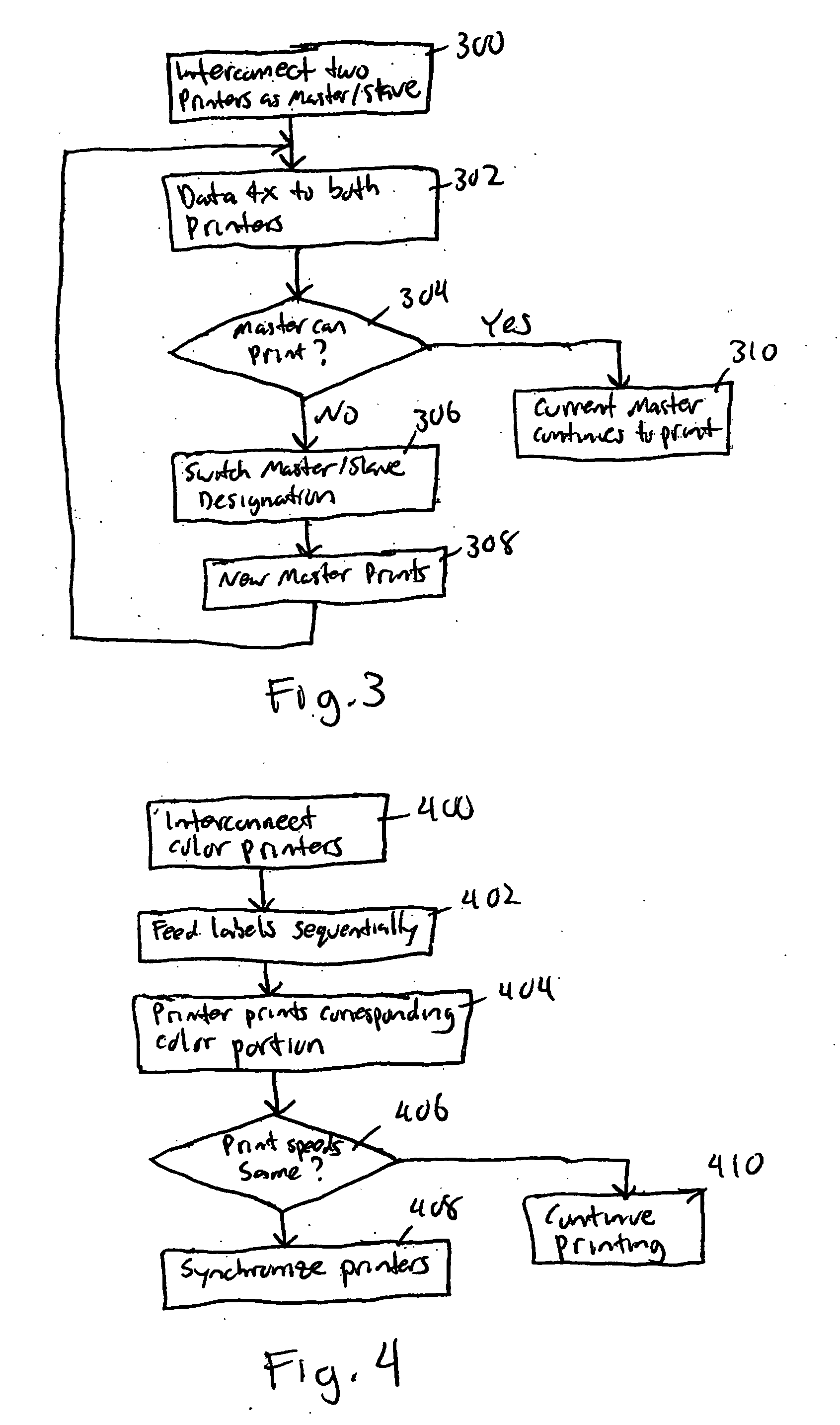Apparatus and method for controlling and managing and RFID printer
a technology of apparatus and printer, applied in the field of printer systems, can solve the problems of increasing the difficulty of color printing using a single printer to process media efficiently and correctly, increasing etc., to achieve the effect of reducing the difficulty of printing high throughpu
- Summary
- Abstract
- Description
- Claims
- Application Information
AI Technical Summary
Benefits of technology
Problems solved by technology
Method used
Image
Examples
Embodiment Construction
[0022]FIG. 1 is a block diagram of a general purpose input / output (GPIO) system 100 according to one embodiment, contained within a printer 102. Printer 102 can be any suitable printer, such as a thermal, laser, or impact printer. GPIO system 100 includes a GPIO hardware portion 104 and a GPIO software portion 106. GPIO software portion 106 communicates with a printer controller 108. The printer controller controls functions of a printer. So, in response to signals from GPIO software portion 106, printer controller 108 can send appropriate command instructions to the printer. GPIO hardware portion 104 can be an IO board mounted in the printer, and GPIO software portion 106 can be a PC-based GPIO manager that allows the user to define how the general purpose IO hardware should behave for a given application and a printer resident GPIO event parser.
[0023] GPIO hardware portion 104, e.g., a GPIO board, handles the actual interfacing of the printer to the outside world, i.e., external ...
PUM
 Login to view more
Login to view more Abstract
Description
Claims
Application Information
 Login to view more
Login to view more - R&D Engineer
- R&D Manager
- IP Professional
- Industry Leading Data Capabilities
- Powerful AI technology
- Patent DNA Extraction
Browse by: Latest US Patents, China's latest patents, Technical Efficacy Thesaurus, Application Domain, Technology Topic.
© 2024 PatSnap. All rights reserved.Legal|Privacy policy|Modern Slavery Act Transparency Statement|Sitemap



